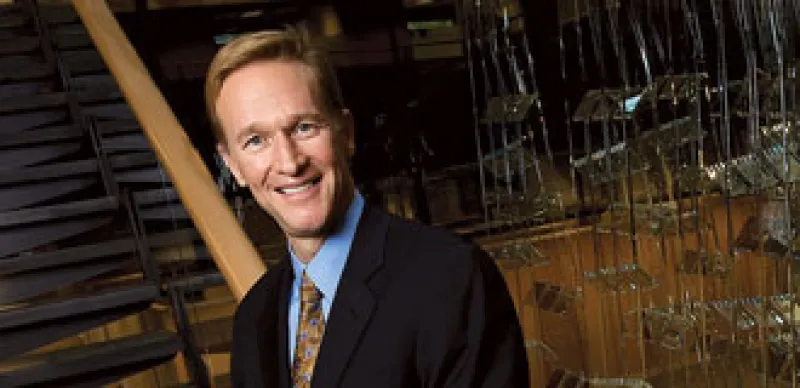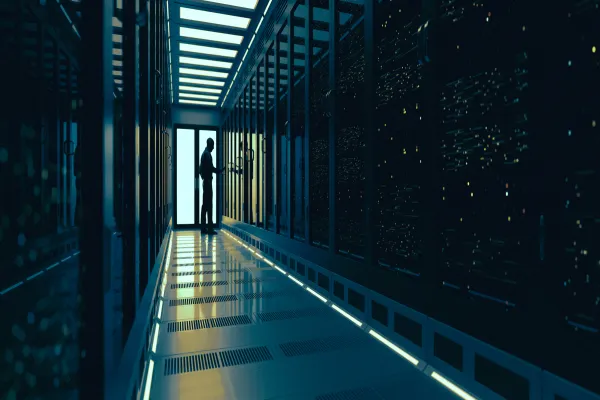Corning CEO Wendell Weeks learned the hard way that what goes up can come crashing down. During the high-flying 1990s, when up seemed the only direction that sales could go for telecommunications companies, he was heading optical communications at the 150-year-old glassmaker. Corning, technically a multiproduct company, had been devoting nearly all of its financial and psychic energy to that one business line.
The telecom market, of course, tanked. And Weeks rode Corning’s optical communications revenue down from $5 billion in 2000 to $1.6 billion in 2002. Corning’s shares, which had soared to $113 in September 2000, plunged to little more than $1 in the fall of 2002.
At a lot of companies, Weeks would have been sacrificed; at Corning he was promoted to chief operating officer. “I have yet to find someone who really saw the telecom implosion coming,” James Houghton, scion of Corning’s founding family, said at the time.
When Weeks, now 50, became Corning’s chief executive in 2005, he swore that the company would never again tie its future to one product. He has been good to his oath. Corning’s most popular, and profitable, product is display glass used for flat-panel televisions and computer screens, but the company has continued to research glass for applications in antipollution devices, solar energy, medical and pharmaceuticals testing, cell phones and other uses.
Trained as an accountant (a graduate of Lehigh University, he was a Baker Scholar at Harvard Business School), Weeks insisted that Corning keep cash flowing and debt at manageable levels. In January 2009 he cut the company’s workforce by 13 percent and froze management salaries for the year. But he has refused to outsource manufacturing or to shutter many plants. And even in the depths of the recession, he kept pumping 10 percent of sales into engineering and R&D.
“We’ve spent billions to be the lowest-cost producers of display glass and to develop clean diesel technology,’’ Weeks notes. “We’ll take innovation risks that ensure a future, not financial risks that maximize a given year’s earnings and cash.’’ Thus, although sales of flat-panel televisions plunged in the downturn, display glass accounts for less than half of Corning’s revenue, so the drop did not pull the company under.
Corning is in recovery mode, along with the economy. Fourth-quarter sales ($1.53 billion) were up 41 percent year-over-year, and earnings per share gained even more dramatically: 238 percent. Still, full-year revenue and earnings were off compared with 2008’s. In mid-Feburary, Corning’s share price was about $18.
In a recent conversation with Institutional Investor Contributing Writer Claudia Deutsch, Weeks discussed how lessons from the past augur well for Corning’s future.
Institutional Investor: Telecom imploded on your watch. Why weren’t you fired?
Weeks: The board decided I was a good leader who could learn from the experience of delivering a bad performance. That’s always been the Corning culture, that sins of commission are never punished, that mistakes are allowed as long as you learn from them. When people are wrong on the market or back a failed product, we capture the lessons learned, but we hold on to the people. You have to have both failures and successes to tell the difference.
Corning was in fairly good shape, in terms of debt and cash flow, when the economy melted down in 2008. Did you see the recession coming?
No, we had finally recognized the power of uncertainty. When telecom melted down in 2002, we had $2 billion more debt than cash and we lost probably $1.8 billion in income. So we set out to make the company so financially stable that it would never again be swamped by unforeseen events. At the end of 2008, we had half a billion more in cash than debt and we had little debt falling due in the next five years. So, sure, the recession hit our stock price and earnings, but we were so stable we could still pursue our strategies.
Since you have all that cash, are you on the acquisition trail? Is your dividend sacrosanct?
We see our competitive edge coming from new products we develop, but sure, we’ll take advantage of external opportunities. In September we acquired Axygen BioScience, which expands our portfolio of laboratory research products and increases our access to the Asian market. And, yes, our goal is to protect the dividend.
Last year you cut jobs but shuttered few plants. Why?
The power of uncertainty cuts both ways. We wanted to be prepared for an unexpected recovery, too, and we sized the company accordingly. One thing we learned from the telecom fiasco of 2002 is that you can’t blindly follow your customers’ assumptions. We thought our glass customers were reducing demand too much, that sales would pick up sooner than they predicted. And in hindsight we still overcorrected downward, because the recovery in display glass and fiber optics has been better than even we expected. Similarly, we have a technology that makes the air coming out of a big truck’s tailpipe cleaner than the air it sucks in. There are few customers for big trucks in a recession, so we have a huge factory that’s been running way below capacity. But we are not mothballing that facility, because we know that when the freight market recovers, people will start buying huge semis again.
You’ve never outsourced manufacturing. How come?
We are the world’s lowest-cost producer of everything we make, so manufacturing is a significant competitive advantage for us. Much of our competition is based in Asia, and 70 percent of our revenue comes from outside the U.S. We have plants in most areas where we have customers.
In 1987 you sold Corning’s legacy consumer cookware business to fund your push into fiber optics. Was that the right decision?
I recently asked Jim Flaws [Corning’s chief financial officer] that. He doesn’t think we’d have gotten out of consumer if we were as good at manufacturing then as we are today. Personally, I think we just didn’t realize the value of a business that lent financial stability rather than fueled telecom’s meteoric growth. Of course, the trend is for people to cook more these days. But we can’t redo the past — and I’m not planning to take the company back into cookware now.
You’re not pinning Corning’s future on display glass. But can you justify research spending on products without clear sales potential?
We’re not building a company for the next 12 months, but for the next 100 years. Our diesel truck technology hasn’t done as well as we hoped, but that doesn’t mean we’ll abandon it or the people who developed it. And we think we can develop a substrate that improves the conversion efficiency of some solar energy technologies. Lots of people don’t think this technology is plausible. But we’ve launched teams and spending.
What other products look promising?
We’ve gotten several big customers for Epic, our drug-screening tool. We’ve got a technology to remove mercury emissions from coal-fired power plants. We’ve got a bendable fiber that’s great for data centers. And we’re very encouraged by customer trials of our photovoltaic glass.
Do you ever abandon bad ideas?
We had some novel ideas about treating water, but we decided they weren’t unique enough to give us an advantage in an already crowded field. So we’re talking to water-treatment companies about licensing our technology. But because something fails in one market doesn’t mean it was a bad idea. Years ago we developed a scratch-resistant glass for automobile windshields, but the market didn’t embrace it. Now we’ve reintroduced it as Gorilla glass, and it’s getting great acceptance for touch screens on cell phones.
Your manufacturing processes are energy-intensive. What are you doing about your carbon footprint?
You’re right about our processes. It takes superhigh temperatures to melt glass. And some of our emissions-control products require 200 hours in the kiln at more than 1,400 degrees. But since 2004 we have actively measured, validated, publicized and managed our greenhouse gas emissions. And since 2006, when we launched our global energy management program, we’ve reduced our greenhouse gas emissions by 96,000 metric tons. That’s the equivalent of taking almost 9,000 Hummers off the road.
Did your compensation suffer in the downturn?
My pay went down 85 percent in 2008. And it should have — shareholders weren’t getting the performance from this company that they expected. We have highly variable pay in the top tier. And it’s right that we do.






